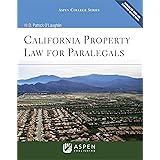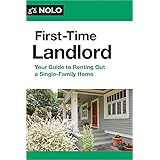Have you ever found yourself scrolling through social media, seeing impressive success stories from real estate investors, and wondering which path is truly the right one for you? Perhaps one person is showcasing a beautifully renovated home they just sold for a significant profit, while another is celebrating the consistent monthly income from their growing portfolio of rental properties. It’s a common dilemma, and one that often causes new investors to pause at the starting line: should focus be placed on flipping houses for quick gains or on the steady, long-term growth offered by rental properties?
The video above features an engaging debate between two seasoned real estate investors, Brandon Turner and Cam Cathcart, as they tackle this very question. Both hosts bring unique perspectives to the table, with Brandon largely advocating for rental properties and Cam championing house flipping. However, as viewers will discover, both strategies possess their own merits and challenges, particularly within the current economic climate. In this accompanying article, a deeper dive into their arguments is provided, along with further insights into how these two distinct approaches to real estate investing can be navigated, or even combined, for optimal wealth building.
Understanding the Appeal of House Flipping in Real Estate Investing
For many aspiring real estate investors, the allure of flipping houses is incredibly strong. It is often perceived as a rapid path to generating substantial income, which can be particularly attractive for those looking to escape the confines of a traditional W2 job. The excitement of transforming a dilapidated property into a modern, desirable home, and then selling it for a profit, is a powerful motivator. Cameron Cathcart, for instance, emphasizes that flipping can yield significantly higher returns than many conventional employment roles.
A key benefit of house flipping is its potential for significant active income. Imagine a scenario where ten properties are successfully flipped within a year, each generating a net profit of $50,000. This could translate into a remarkable $500,000 annually, a sum that surpasses the earnings of a vast majority of W2 positions. While this strategy is indeed active and demands considerable effort, the financial rewards can be life-changing, providing the capital needed to pursue other investments or achieve financial independence.
However, it must be acknowledged that flipping houses is not without its risks. As Brandon Turner points out, it is essentially a self-employed job, where the entire responsibility for the project’s success falls on the investor. Market shifts, unexpected repair costs, or difficulties in selling a property can quickly erode profits, or even lead to substantial losses. Therefore, a robust understanding of risk mitigation strategies is paramount. This includes mastering accurate deal analysis, cultivating strong relationships with reliable contractors, and implementing efficient systems for project management and budget adherence. When executed properly, flipping houses can be a highly lucrative venture, offering a direct route to significant wealth accumulation.
The Long-Term Wealth Building Potential of Rental Properties
In stark contrast to the active income model of flipping, rental properties are often championed for their long-term wealth-building capabilities. This strategy is frequently associated with concepts like passive income, equity accumulation, and asset appreciation, which collectively contribute to financial freedom over time. Brandon Turner, with his extensive portfolio of 13,000+ rental units, is a strong proponent of this approach, viewing rentals as a cornerstone of lasting financial security.
The core benefit of rental property investing is that tenants contribute to paying down the mortgage, effectively building equity for the owner. Over years, this systematic debt reduction, coupled with the natural appreciation of real estate values, can lead to substantial increases in net worth. While the initial phases of managing rental properties may require significant involvement—as Cameron Cathcart accurately notes, it’s not truly “passive” in the beginning, even with property management in place—the effort tends to diminish as systems become established and portfolios mature. It is a process that can be likened to consistently working out; initial soreness gives way to strength and greater ease over time, eventually leading to a powerful, compounding asset.
In today’s market, however, the traditional route to cash-flowing rental properties faces challenges, primarily due to high interest rates. A property purchased at a typical market rate with an 8% interest loan often struggles to meet the common “1% rule” (where monthly rent equals 1% of the property’s purchase price). In fact, a “1.5% to 2% rule” may be needed for true cash flow. This means an investor might need to rent a $200,000 property for $3,000-$4,000 per month just to cover expenses and generate profit. Additionally, “phantom cash flow” must be avoided, which occurs when investors overlook critical expenses such as capital expenditures (CAPEX), maintenance, vacancy, and property management fees. For example, a water heater replacement costing $1,000 every four years requires setting aside approximately $21 per month, a figure often forgotten in simple calculations.
Navigating High Interest Rates: Active Rental Strategies
Given the challenges posed by high interest rates, Brandon Turner suggests a shift towards more active rental property strategies. This involves moving beyond simply buying fixed-up, open-market homes and instead focusing on finding deals that require significant value-add work. For instance, acquiring a seven-unit multifamily property that needs extensive renovation could, after a year of project management, generate $2,000 per month in pure cash flow. This amounts to $24,000 annually, a steady income stream that continues indefinitely and typically grows over time.
This “active rental income” approach, which often involves elements of rehabilitation similar to flipping, allows investors to create their own equity and cash flow rather than relying on market-driven appreciation alone. Furthermore, exploring strategies like mid-term or short-term rentals, or even converting properties into assisted living facilities, can dramatically boost income streams, effectively transforming a property into a more business-like operation. The initial effort is substantial, but the payoff is a recurring income that compounds over years, offering a compelling path to financial independence. It is like drilling oil wells; each successful well, though demanding to establish, pumps out continuous revenue for the long haul.
The Synergy of Flipping and Rental Property Investing
While the video initially frames the discussion as a hardline debate, both Brandon and Cameron agree that the most effective strategy for the average person, especially those starting without significant inherited wealth, is often to integrate both house flipping and rental property investing. These two strategies are not mutually exclusive; instead, they can work together synergistically to accelerate wealth accumulation and provide flexibility in different market conditions.
Flipping can serve as a powerful engine for generating the active income needed to break free from a W2 job. This liberation of time and capital then allows an investor to focus on building a robust real estate business. Once an investor becomes proficient at sourcing deals—a skill critical for both strategies—they can strategically decide whether to flip a property for a quick profit or hold it as a rental. This flexibility is particularly valuable in dynamic markets where interest rates fluctuate. When rates are high, flipping might be prioritized to capitalize on immediate gains. Conversely, when rates drop, more properties can be held as rentals to lock in favorable long-term debt and expand the passive income portfolio.
This integrated approach allows investors to cherry-pick the best deals for their specific goals. Properties with high profit potential can be flipped, while those offering strong, sustainable cash flow and appreciation can be added to the rental portfolio. Even properties that don’t fit perfectly into either category can be wholesaled or wholetailed, ensuring that no good deal is left unaddressed. The key is to establish a consistent “deal flow” – a continuous pipeline of potential properties. Once deals are consistently coming in, the decision of what to do with them becomes a strategic choice rather than a scramble for opportunities.
Who Should Flip and Who Should Buy Rentals?
The decision to pursue house flipping or rental properties, or a combination of both, ultimately hinges on an individual’s unique circumstances, risk tolerance, and time availability. Not every strategy is suitable for everyone, and a careful self-assessment is essential before diving into real estate investing.
**Considerations for Flipping Houses:**
- **Risk Tolerance:** Flipping involves inherent risks, including market shifts, unexpected repair costs, and potential for deals to go sideways. Those with a low tolerance for financial uncertainty might find this path stressful.
- **Time Commitment:** It is an active business requiring significant time for deal sourcing, contractor management, and project oversight. “Weekend warriors” who lack the dedicated time to learn and execute properly often face difficulties.
- **Financial Goals:** Ideal for individuals seeking substantial active income to quickly build capital or transition out of a traditional job.
**Considerations for Rental Properties:**
- **Long-Term Vision:** This strategy is best suited for those focused on building generational wealth through equity, appreciation, and recurring income over decades.
- **Patience:** While potentially less volatile than flipping, it requires patience for returns to compound and for “passive” income to truly materialize after systems are in place.
- **Everyone?** Cameron Cathcart asserts that virtually everyone should consider rental properties due to the powerful trifecta of loan paydown by tenants, property appreciation, and cash flow.
**The Universal Prerequisite:**
Regardless of whether someone chooses to focus on flipping houses, rental properties, or a blend of both, a fundamental requirement is a commitment to continuous learning and education. Real estate investing is not an endeavor that can be “winged.” It demands a willingness to read books, listen to podcasts, watch educational videos, attend conferences, and potentially join investment groups. Without this dedication to knowledge and skill development, investors risk making costly mistakes. Even individuals earning a substantial income from an existing business or W2 job are advised to think critically before venturing into real estate from scratch. Sometimes, doubling down on an existing successful venture and then investing profits into more passive vehicles like syndications or diversified funds can be a more prudent approach, rather than starting a completely new, time-intensive business from the ground up.









